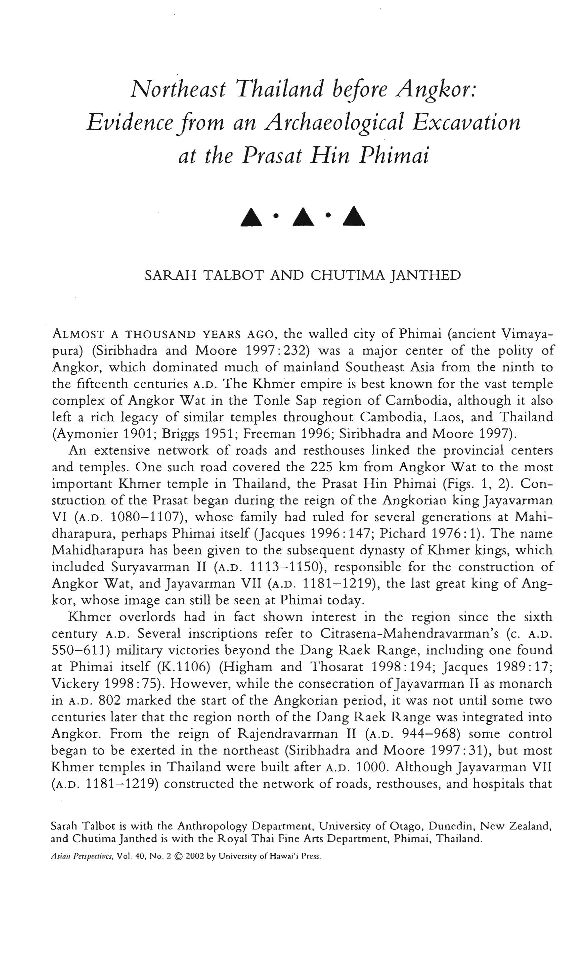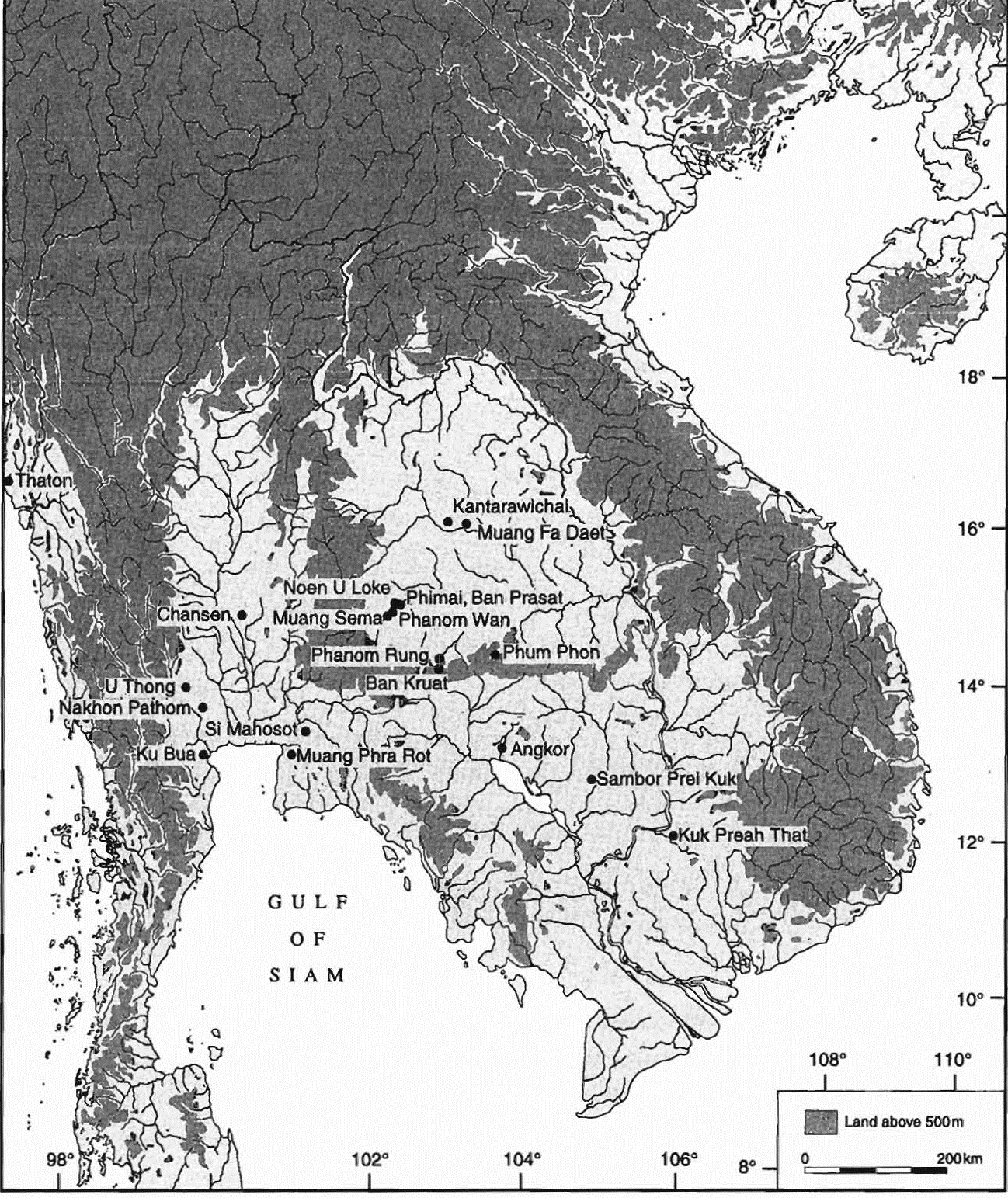Northeast Thailand before Angkor
by Sarah Talbot & Chutima Janthed
Evidence from an archaeological excavation at the Prasat Hin Phimai in the 2000s.

Publication: Asian Perspectives, Vol. 40. No.2
Published: September 2001
Authors: Sarah Talbot & Chutima Janthed
Pages: 16
Language : English
pdf 6.1 MB
What was the political and social reality of the Upper Mun Valley at the dawn of the first millenium CE? From archeological finds, the authors propose the following conclusions:
- “Khmer overlords had shown interest in the region since the sixth century A.D. Several inscriptions refer to Citrasena-Mahendravarman’s (c. A.D. 550 – 611) military victories beyond the Dang Raek [Dangrek] Range, including one found at Phimai itself (K.1106). However, while the consecration of Jayavarman II as monarch in A.D. 802 marked the start of the Angkorian period, it was not until some two centuries later that the region north of the Dang Raek Range was integrated into Angkor. From the reign of Rajendravarman II (A.D. 944 – 968) some control began to be exerted in the northeast (Siribhadra and Moore 1997: 31), but most Khmer temples in Thailand were built after A.D. 1000. Although Jayavarman VII (A.D. 1181 – 1219) constructed the network of roads, resthouses, and hospitals that linked provincial centers to Angkor, his death saw the empire fragment. Prayers were offered at the Prasat Hin Phimai upon the death of Indravarman III in A.D. 1243 (Briggs 1951 :238), but the late thirteenth century effectively saw the end of the Angkorian control in what is now northeast Thailand.”
- “The centuries from the end of prehistory to the splendors of Angkor have been described as “the Dark Ages of Isan” (Rogers 1996:51). However, there is evidence that the people of this period shared important new Indian-influenced practices with their neighbors to the west and south, particularly the use of inscriptions and the construction of religious buildings in permanent materials. The inscriptions recording the “exploratory probes” (Vickery 1998: 79) of the sixthcentury overlords from the south have already been mentioned, but a number of other inscriptions refer to protohistoric kings, several Buddhist, who ruled in the region (Brown 1996; Higham and Thosarat 1998: 194 – 195; Jacques 1989). A succession of brick pre-Angkorian temple sites has been linked to the political consolidation of the Khmer in Cambodia, Sambor Prei Kuk being the most famous (Benisti 1970; Boisselier 1955, 1966; Jacques 1996; Parmentier 1927; Siribhadra and Moore 1997: 26). In contrast, very few Khmer-style temples were built in Thailand before the tenth century.”
- “While Muang Sema was a more important site than Phimai during protohistoric times, this was not the case in the later Angkorian period, when Phimai was a major regional center. Jayavarman VI’s successful bid for the throne at Angkor may have given him reason and opportunity to tear down the old brick temple of his ancestors and replace it with the existing sandstone temple (Higham and Thosarat 1998: 198). The 1998 excavation suggests that part of such reconstruction was the reuse of bricks from an earlier structure to form the new foundations. Such rebuilding and reuse, while not always convenient for archaeologists, is clearly an important indication of the changing power dynamics of local dynasties, in this case that of Mahidarapura.”
- “The Prasat Hin Phimai was an important Angkorian center, but one built quite literally on an earlier foundation. By the late first millennium A.D., the independent Iron Age communities evidenced at sites such as Noen V‑Loke had been transformed into protohistoric “kingdoms” that were part of a complex panregional landscape of shared cultural traits. Beneath the Prasat Hin Phimai lies material evidence of these people, and the site should be added to the list of their architectural remains.”
Sites considered in the study.
Tags: pre-Angkorean, Thailand, Khmer Empire, Jayavarman VI, Dvaravati, Chenla, Early Southeast Asia, Phimai, Northeast Thailand, Iron Age
About the Authors
Sarah Talbot
Sarah Talbot is a researcher at the Anthropology Department, University of Otago, Dunedin, New Zealand.
Chutima Janthed
Chutima Janthed is a researcher at the Royal Thai Fine Arts Department, Phimai. Thailand.


